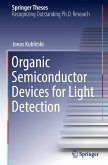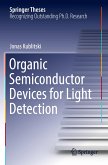This work systematically investigates the use of high-quality (high-Q) resonators as coding particles of chipless cooperative radar targets to overcome clutter. Due to their high-Q, the backscattered signature can outlast clutter and permit reliable readouts in dynamic environments as well as its integration in other types of cooperative radar targets for joint identification, sensing, and ranging capabilities.
This is first demonstrated with temperature and pressure sensors in the microwave frequency range, which include the characterization of a novel temperature sensor for machine tool monitoring up to 400 °C, as well as inside the machine. Afterwards, the thesis proposes and demonstrates the use of metallic as well as dielectric Electromagnetic BandGap (EBG) structures to enable the realization and to enhance the capabilities at mm-Wave and THz frequencies compared to microwave frequencies with compact monolithic multi-resonator cooperative radar targets. Furthermore, thiswork studies the integration of resonators as coding particles inside larger retroreflective configurations such as Luneburg lenses to achieve long-range and high accuracy for localization and, at the same time, frequency coding robust against clutter for identification. Finally, the successful readout of these cooperative radar targets is demonstrated in cluttered dynamic environments, as well as with readers based on Frequency-Modulated Continuous-Wave (FMCW) radars.
This is first demonstrated with temperature and pressure sensors in the microwave frequency range, which include the characterization of a novel temperature sensor for machine tool monitoring up to 400 °C, as well as inside the machine. Afterwards, the thesis proposes and demonstrates the use of metallic as well as dielectric Electromagnetic BandGap (EBG) structures to enable the realization and to enhance the capabilities at mm-Wave and THz frequencies compared to microwave frequencies with compact monolithic multi-resonator cooperative radar targets. Furthermore, thiswork studies the integration of resonators as coding particles inside larger retroreflective configurations such as Luneburg lenses to achieve long-range and high accuracy for localization and, at the same time, frequency coding robust against clutter for identification. Finally, the successful readout of these cooperative radar targets is demonstrated in cluttered dynamic environments, as well as with readers based on Frequency-Modulated Continuous-Wave (FMCW) radars.








